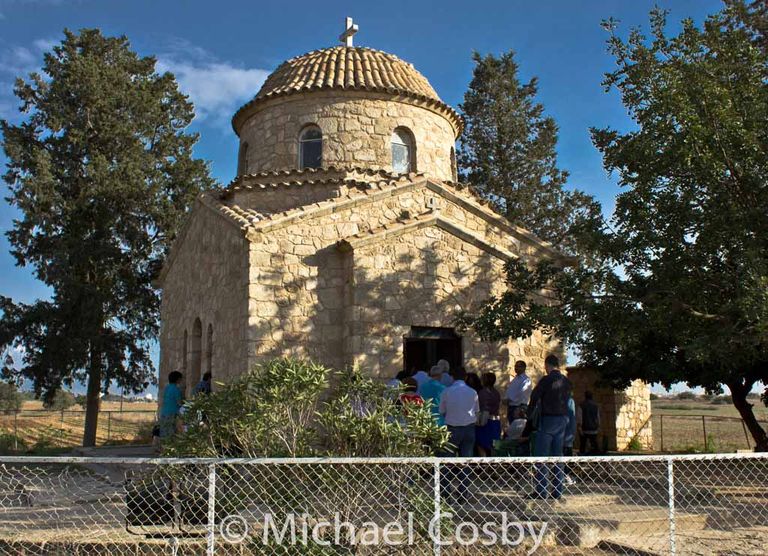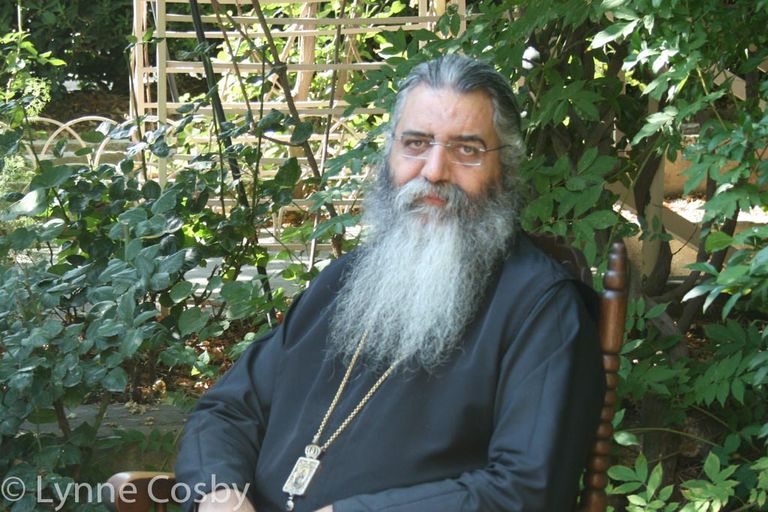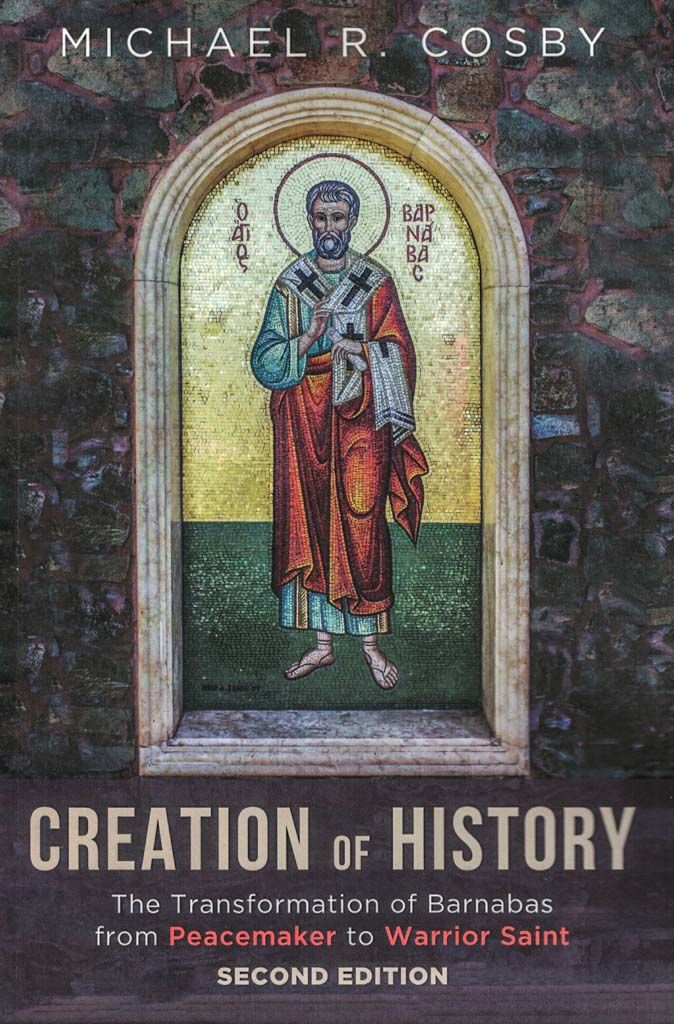
Illustrations used in Creation of History
The photos in the print version are black and white, so here are the original, color pictures, which provide much more detail. The increased clarity found in these color images is important for visualizing key elements I describe in the book. Unless otherwise noted, I took these photos. All images are copyrighted, so any transmission or use of them without permission is prohibited. Watermarking the photos became a necessary nuisance, because some people pirate my photos to use on their own websites without giving any attribution to me. Thanks for understanding.
≈≈≈≈≈≈≈≈≈≈≈
Illustrations (Figures 1–34) are shown here in numeric order, as they appear in the book.
Figure 1
Icon of Barnabas painted by Father Gabriel, Abbot of the Monastery of Apostle Barnabas. This generous, elderly monk presented me with a reproduction of his original icon. I took this photograph of the reproduction.
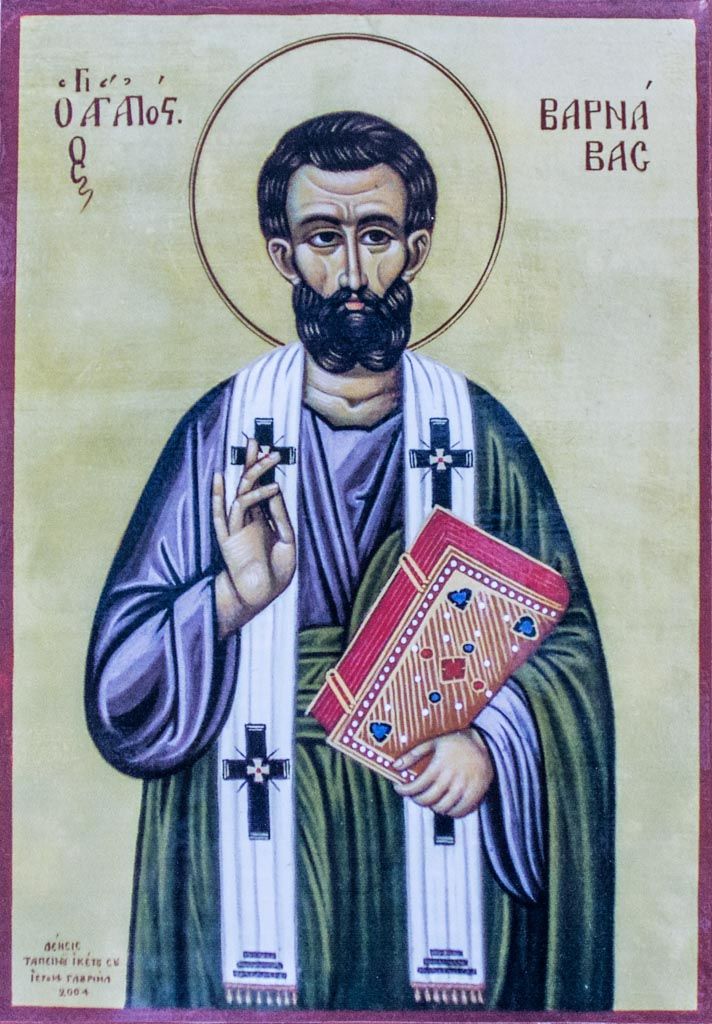
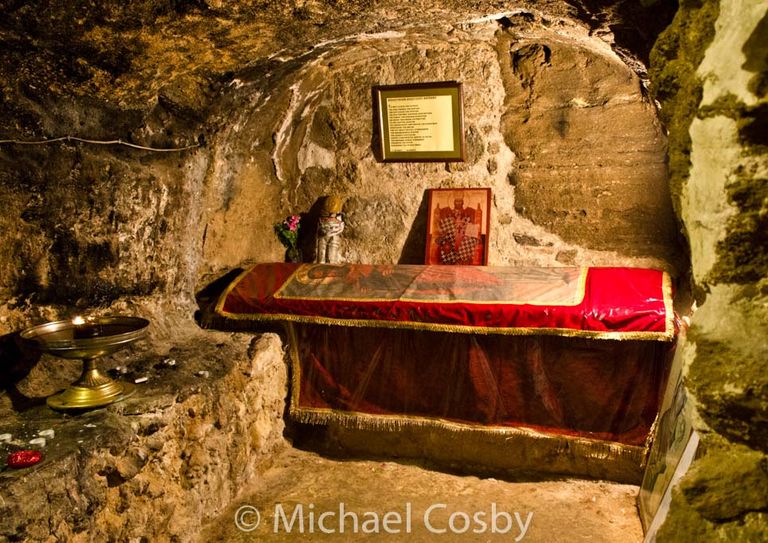
Figure 2
Traditional tomb of Apostle Barnabas, located underneath a small chapel, which is a short walk from the Monastery of Apostle Barnabas.
Figure 3
Monastery Church of the Apostle Barnabas. The friendly, white Turkish dog in the center of the photo escorted us everywhere around the grounds.
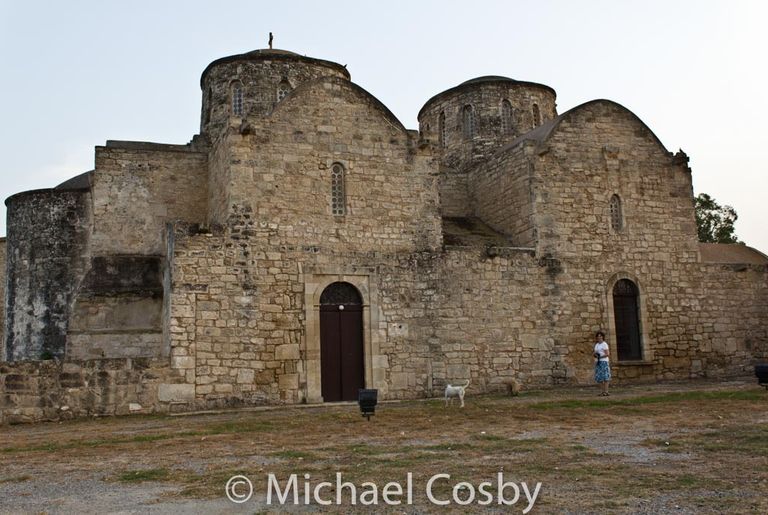
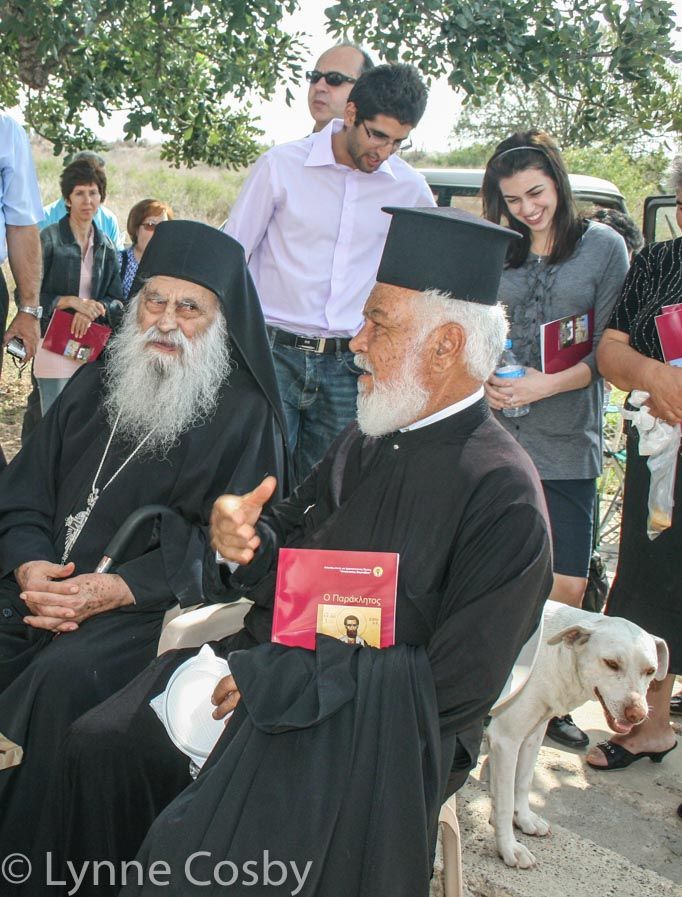
Figure 4
Father Gabriel (left) after a special liturgy
at the Monastery of Apostle Barnabas. The friendly Turkish dog photo-bombed many of our pictures. Here, he looks very pleased with himself.
Photo by Lynne Cosby
Figure 5
Map of Cyprus.
Zoom in to see more detail, including the UN Buffer Zone that divides the island to this day.
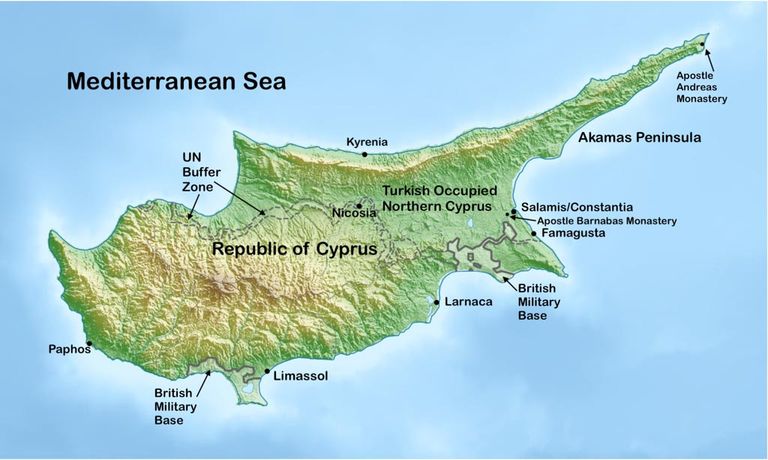
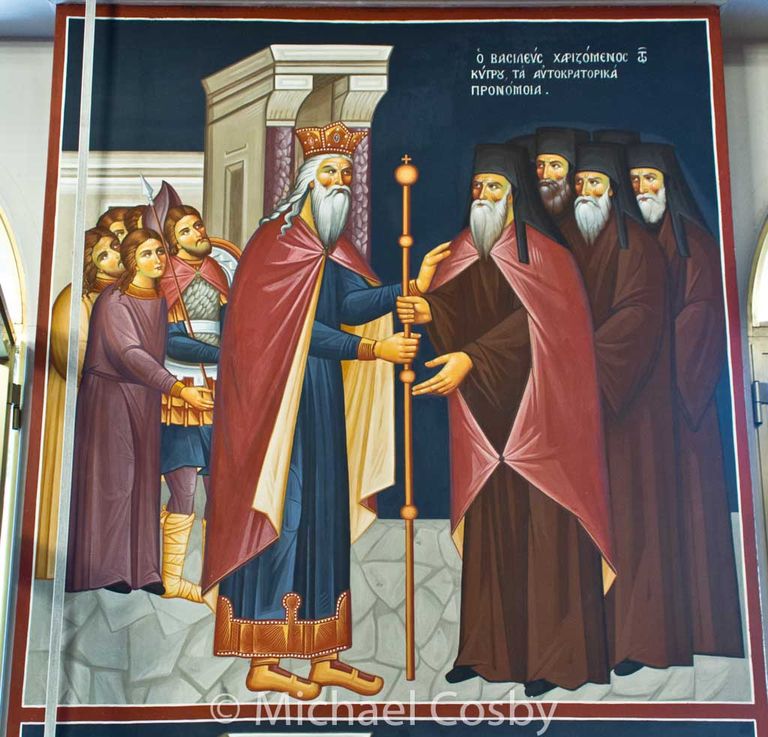
Figure 6
Wall painting in the Archbishopric, depicting Emperor Zeno giving imperial privileges to Anthemios, Archbishop of Cyprus, in the late fifth century. Anthemios wears a red cape, and the scepter he receives
has a globe with a cross on top—called a globus cruciger.
Figure 7
Bronze statue of Archbishop Makarios, first president
of the Republic of Cyprus. The large scepter held in his left hand is topped by a globus cruciger. Unfortunately, the cross atop the globe is barely visible in this photo. You can get an idea of how huge the statue is by seeing how small I look in comparison.
Photo by Lynne Cosby.
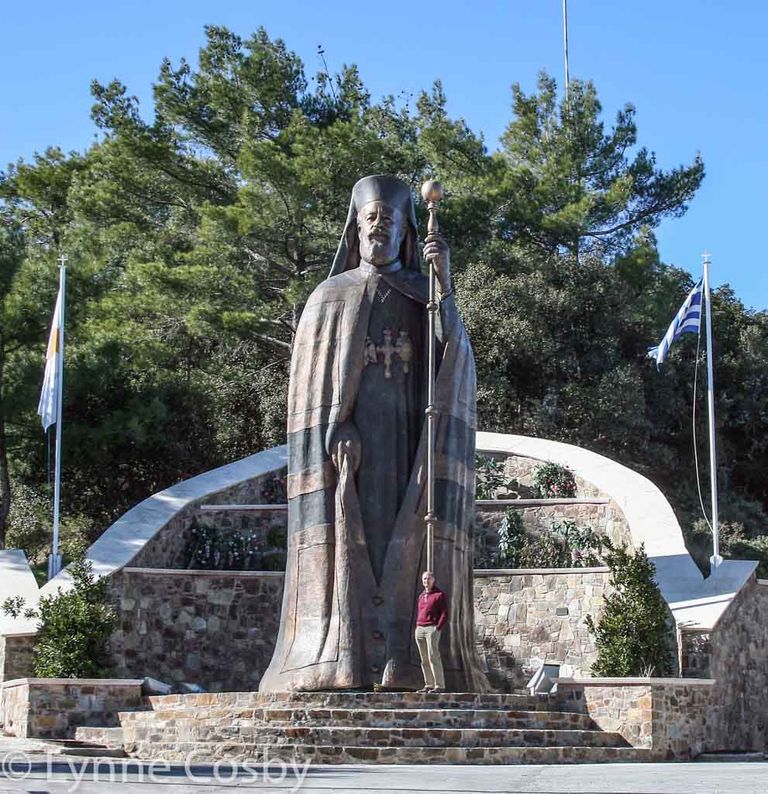
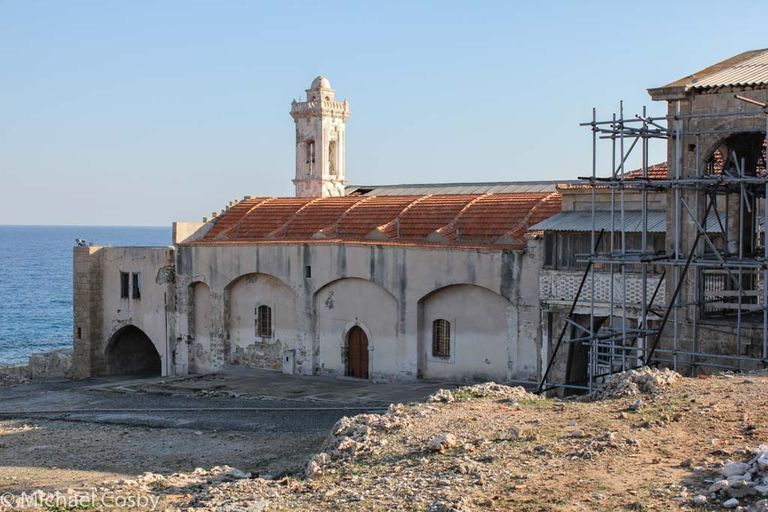
Figure 8
Crumbling remains of the Monastery of St. Andreas
in Turkish-occupied northern Cyprus. Photo taken
in 2011. More recently, restoration work was done on the church.
Figure 9
St. Nicholas’s Cathedral in Famagusta. This Gothic structure, consecrated in 1328, was converted into a mosque in 1571 after the Ottoman Turks conquered the city. The name was changed to the Lala Mustafa Pasha Mosque in honor of the man who mercilessly slaughtered inhabitants of Famagusta after he guaranteed their safe passage if they surrendered. Totally betraying his promise of safety, he had the Venetian commander of troops in Famagusta, Marco Antonio Bragadin, flayed alive. To name the mosque after a man known for his barbaric cruelty seems outrageous to me—but obviously not to the Ottoman Turks. He was later promoted to grand vizier and upon his death was buried with honors in the courtyard of a mosque in Istanbul.
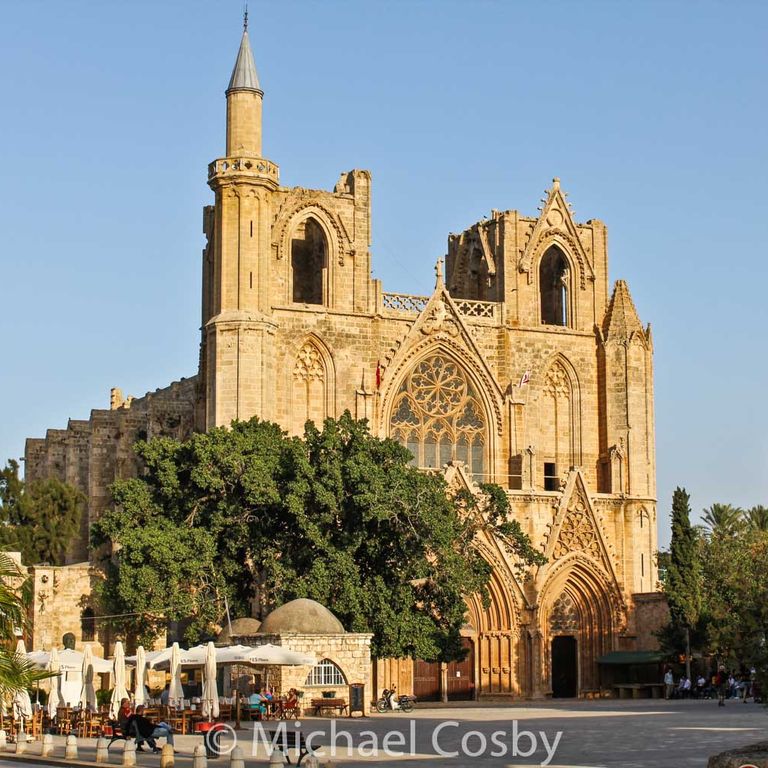
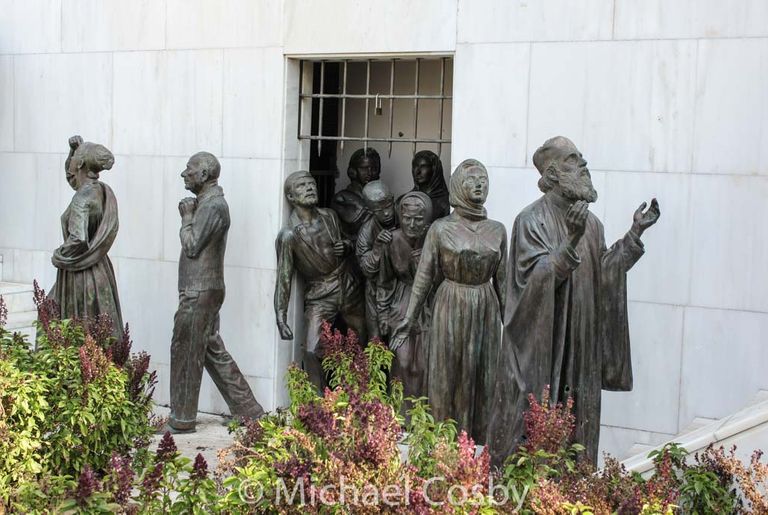
Figure 10
Freedom Monument in Nicosia depicting Greek Cypriots being released from a British prison in 1959, just before Cyprus gained independence.
Figure 11
Archimandrite Gabriel (left), Abbot of the Monastery of Apostle Barnabas, and some of his spiritual children. I am sitting next to the monk beside Fr. Gabriel.
Photo by Lynne Cosby.
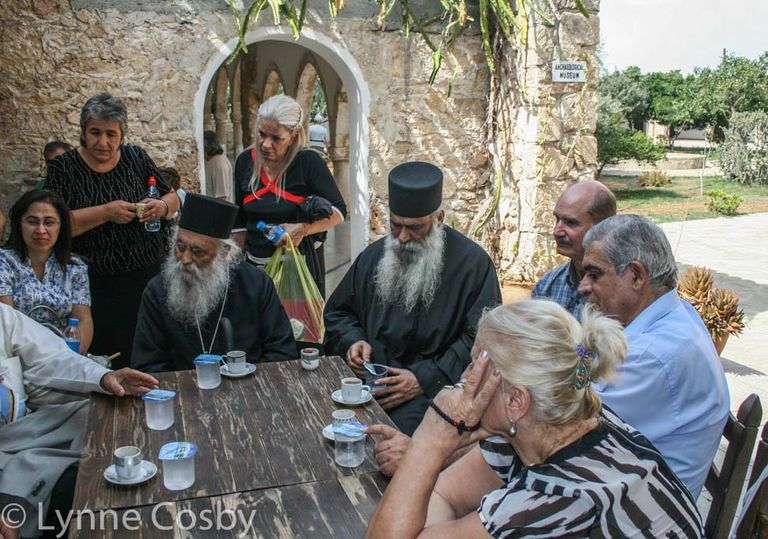
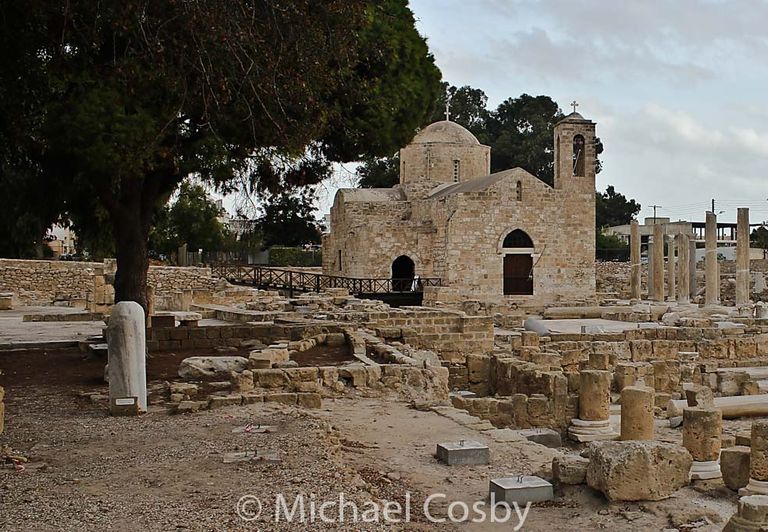
Figure 12
So-called Paul’s Pillar is at the left—in front of the tree—on the grounds of Panagia Chrisopolitissa in Paphos.
Figure 13
Icon of Epiphanius hanging on a wall of the Monastery Church of Apostle Barnabas, which, under Turkish occupation,
is now a museum.
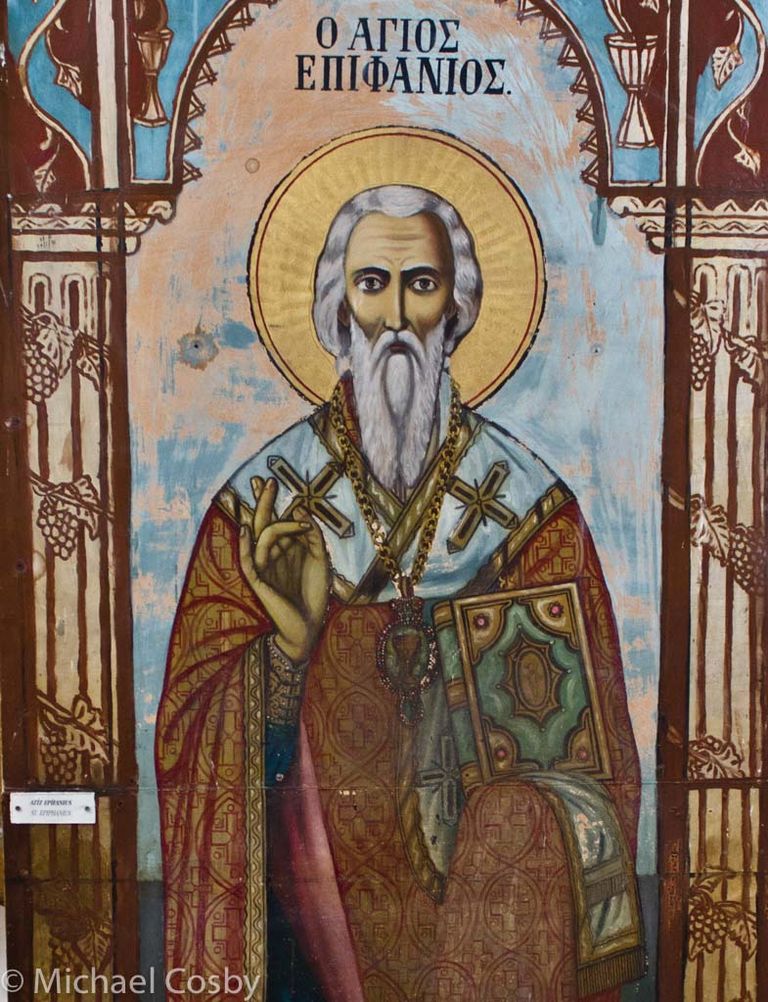
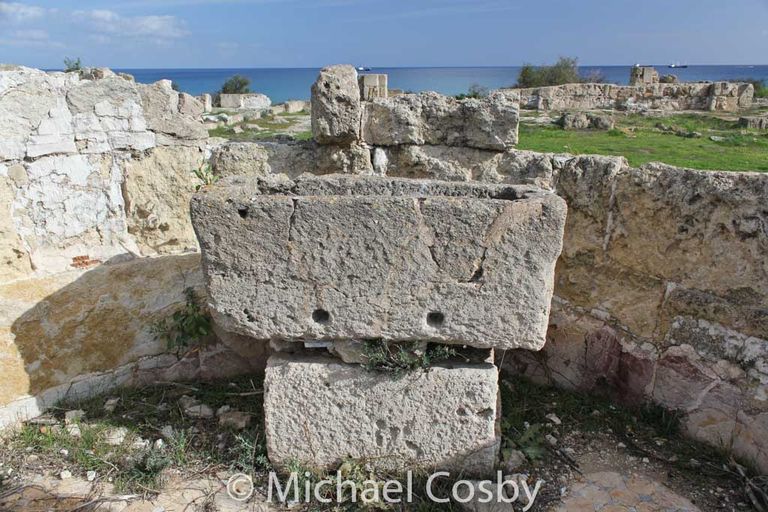
Figure 14
This stone relic box is part of a large church complex called Campanopetra, located in the large Salamis archaeological site by the sea east of the Monastery of Apostle Barnabas. The box apparently held the remains of a saint. A similar container probably held remains believed to be those of Barnabas.
Figure 15
Excavated area in the older part of the Monastery Church of Apostle Barnabas complex near Constantia/Salamis. The stone shelf in the center probably supported a stone box like the one at Campanopetra (see Figure 14), containing what were believed to be the remains of Barnabas.
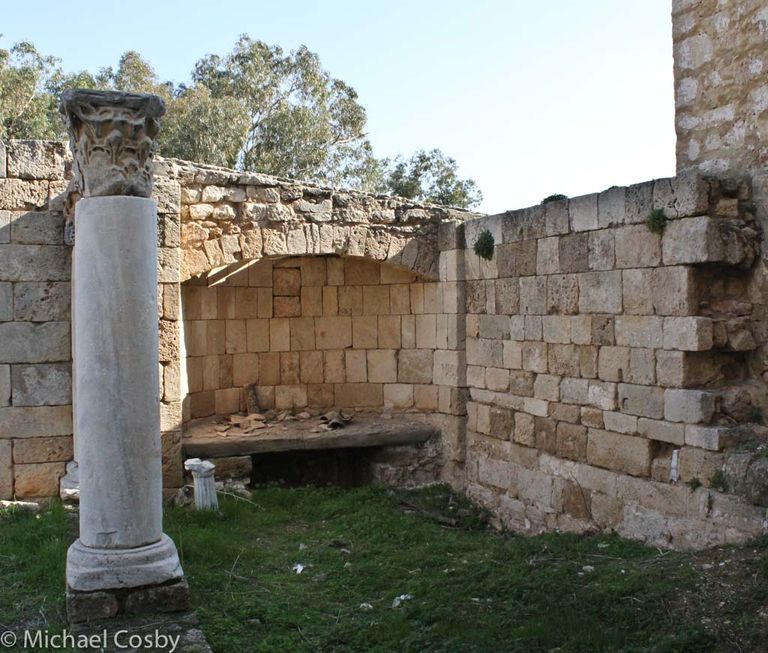
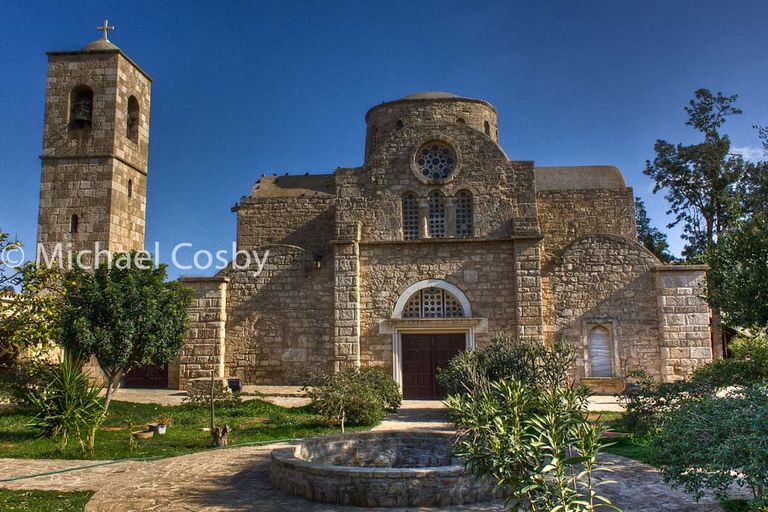
Figure 16
Monastery Church of Apostle Barnabas, built in the eighteenth century. Following the conquest of northern Cyprus in 1974, Turkish officials converted the church into a museum and still forbid Orthodox Christians from holding liturgy in the building.
Figure 17
Icon of Barnabas on a wall in the Monastery Church of Apostle Barnabas. Dated 1921, this icon depicts Barnabas seated on a royal throne, wearing a crown and a lavish, red cape, and holding an ornate scepter.
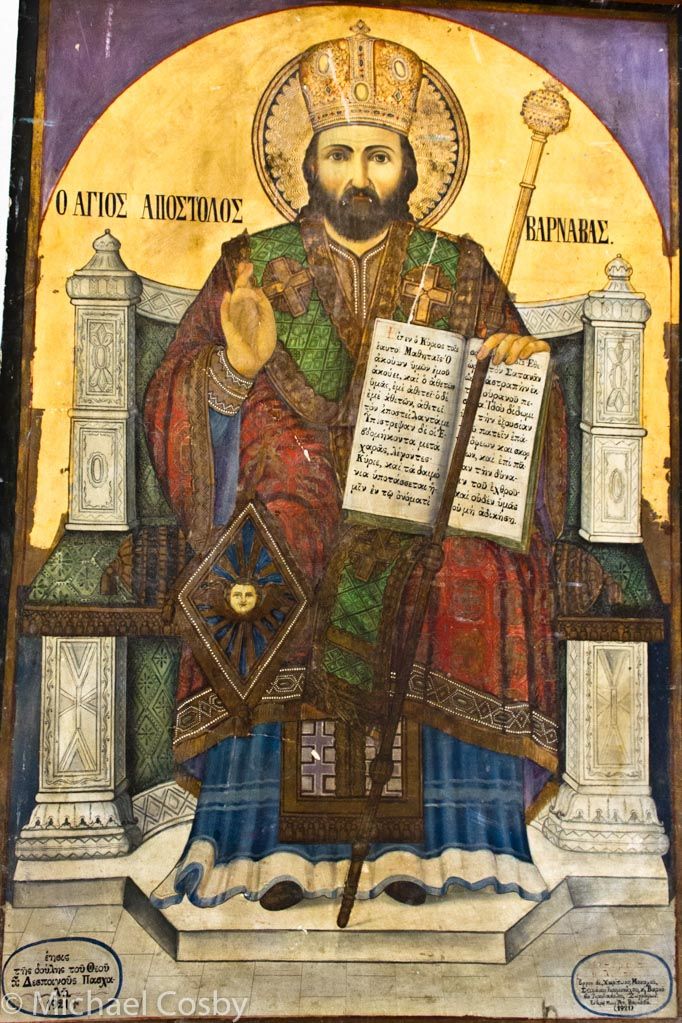
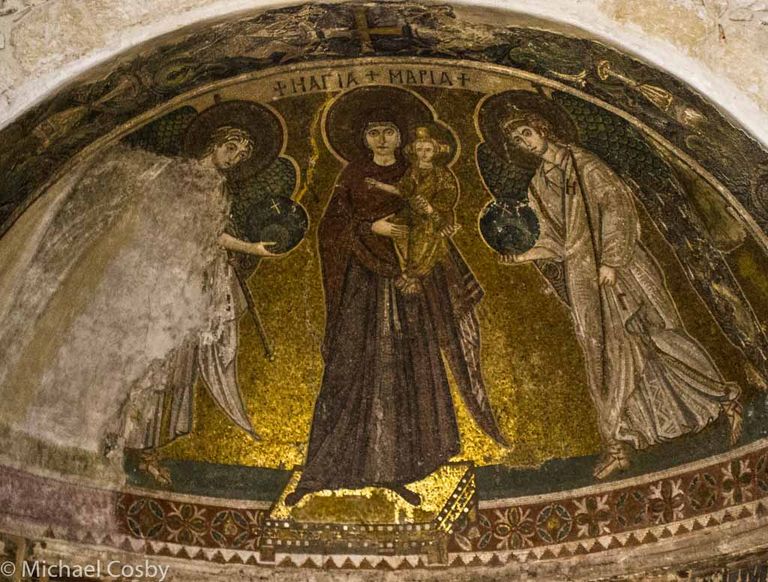
Figure 18
Sixth-century mosaic in the Church of Panagia Angeloktistis depicting Mary holding Jesus. The archangels Michael and Gabriel each offer a globus cruciger to Jesus. Muslim conquerors of Cyprus did not destroy this ancient mosaic, because they also venerated Mary and Jesus.
Figure 19
Henry III, Henry IV, and Conrad of Germany, each holding in his left hand a scepter topped by a globus cruciger. Photo from the manuscript Ewangeliarz Emmeramski (AKKK, Ms 208, fol. 2v), produced in 1100. Image used by permission of the Krakow Cathedral Archives (Archiwum i Biblioteka Krakowskiej Kapituly Katedralnej).
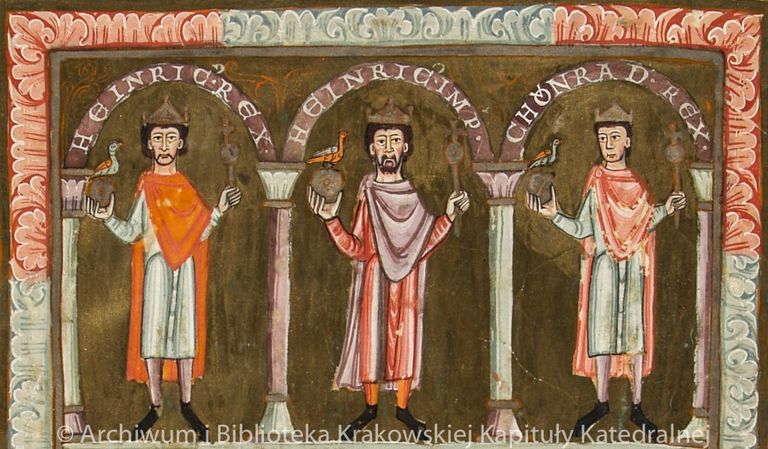
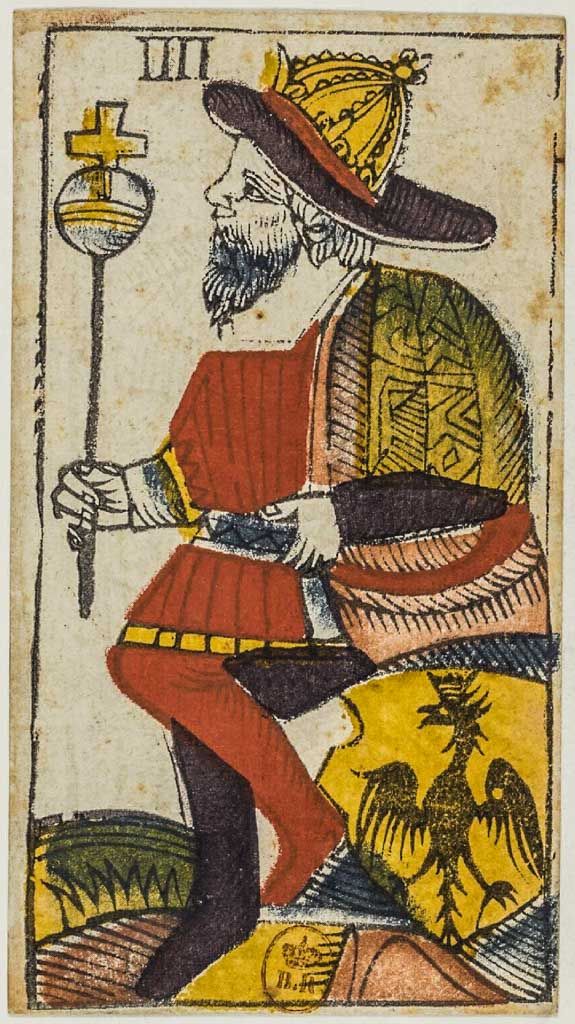
Figure 20
Playing card produced in the 1600s in Paris by Jacques Vieville, showing an emperor holding a scepter topped by a globus cruciger.
Figure 21
Photo of the 1550 icon of Barnabas, © Byzantine Museum and Art Gallery of the Archbishop Makarios III Foundation. Christos Koukliotis, Director General of the Archbishop Makarios III Foundation, was very generous with his time in showing me the icons of Barnabas in the museum collection. He graciously provided this digital photograph of the 1550 Barnabas icon and gave permission to publish it. Director Koukliotis encourages tourists to visit the icon museum, and he is eager to assist academics and students in arranging tours to see the amazing collection of icons housed there. I highly recommend this experience.
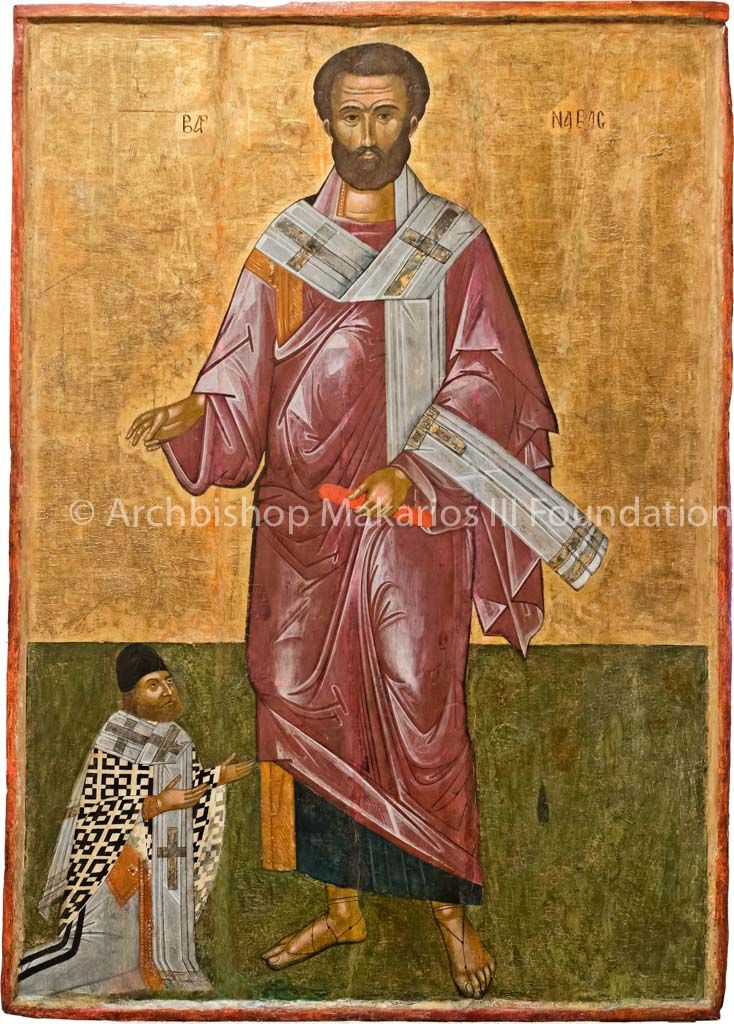

Figure 22
This modern icon of Barnabas, painted by the Archimandrite Gabriel, Abbot of the Monastery of Apostle Barnabas, does not depict the apostle with imperial regalia.
Figure 23
Fifteenth-century fresco of Barnabas in Panagia Chrysokourdaliotissa. Photo taken by permission (in very low light). The Orthodox sister in charge of the church was gracious in showing the icon to me. Without her guidance, I would not have seen it, because of its location in a dark niche. She was a friend of Dafnis Panagides, who took me to the church and functioned as translator for me.
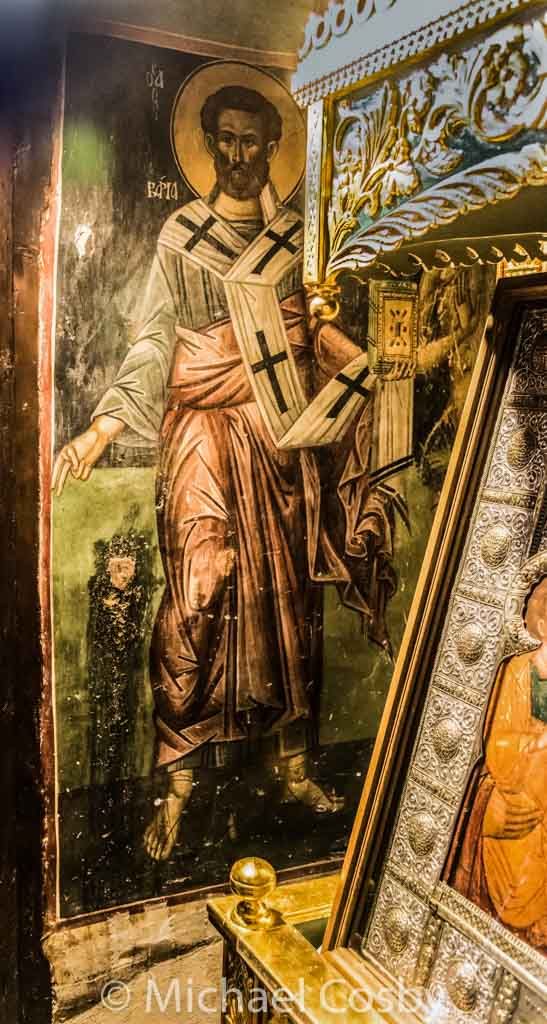
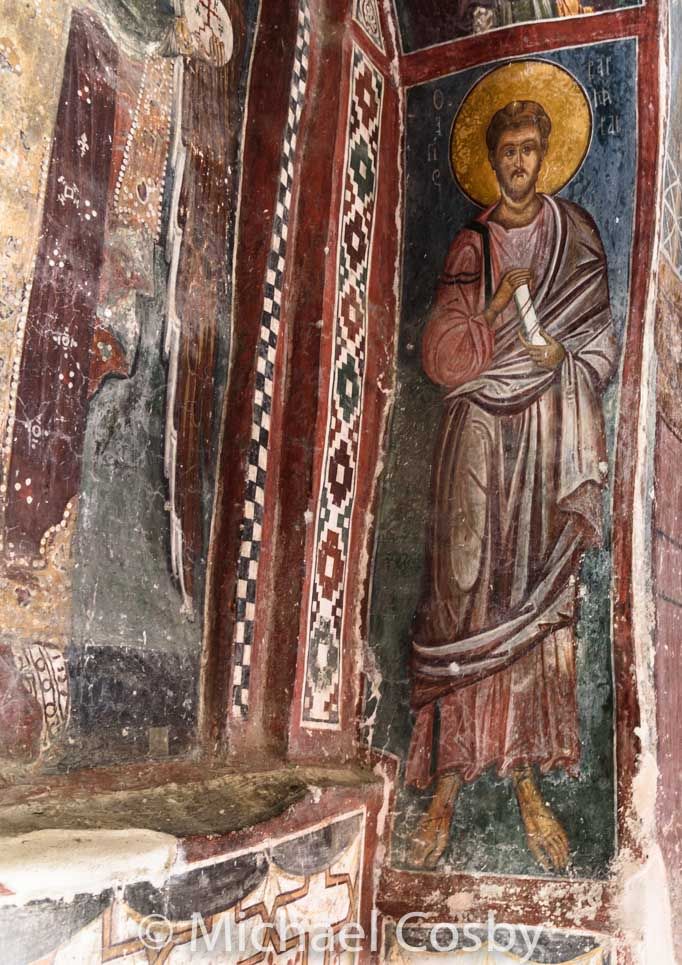
Figure 24
Fourteenth-century fresco of Barnabas in St. Nicholas of the Roof. Photo taken by permission. The lady monitoring visitors to the church was gracious in discussing the fresco, and she was very accommodating in allowing me to photograph it. She also was a friend of Dafnis Panagides.
Figure 25
Barnabas fresco in a semi-circular apse under the windows of the bema in Panagia Asinou. Barnabas is the defaced image on the left. Epiphanius is depicted on the right. Ourania Perdiki graciously provided this photo of the fresco.
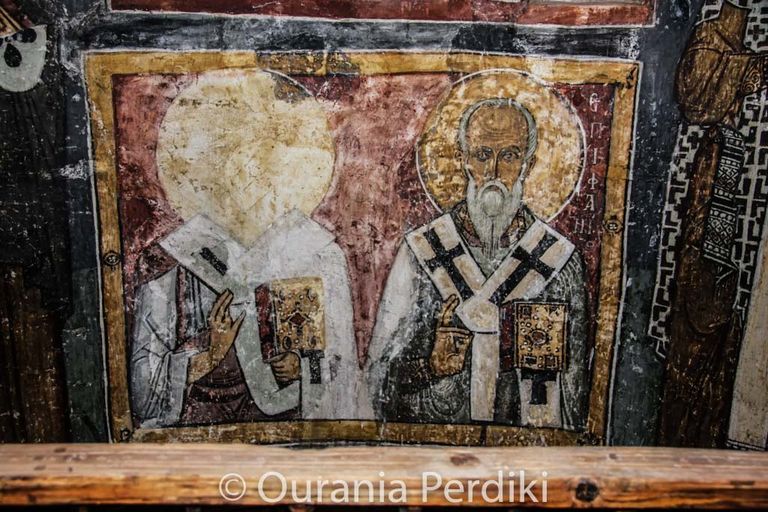
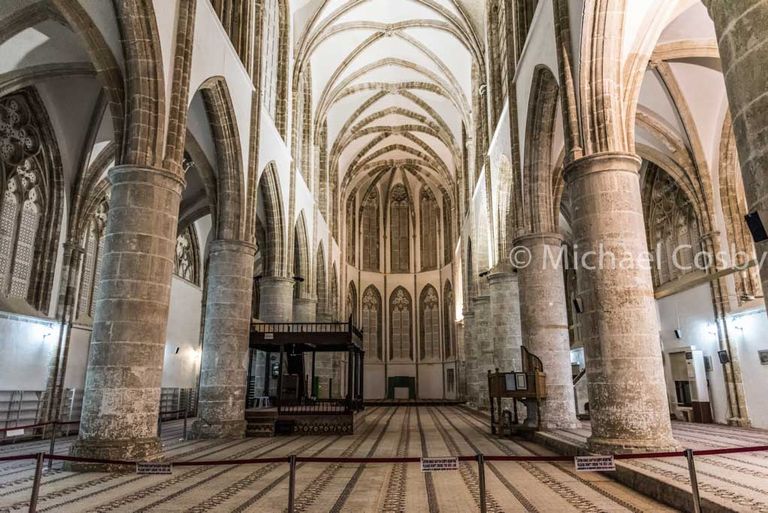
Figure 26
Interior of the Gothic Cathedral of St. Nicholas in Famagusta. This church was converted to a mosque in 1571 and renamed in honor of Lala Mustafa Pasha, who commanded the assault on Famagusta and who slaughtered inhabitants after guaranteeing their safe passage if they surrendered. After explicitly promising to spare survivors, he had the Venetian commander, Marco Antonio Bragadin, flayed alive in public. To name a place of worship after such a cruel and treacherous man seems shameful. His military successes, however, brought honor to him from the Ottoman Empire. The famous architect Sinan designed his tomb, which is located in the courtyard of a mosque in Istanbul.
Figure 27
Photo of the 1673 icon of Barnabas by Leontios, used by permission of the Holy Monastery of Machairas. While visiting the monastery, I witnessed an amazing exhibition of a musician playing bells in a low bell tower. Using both his hands and feet to ring the bells, he produced beautiful music in his solo performance.
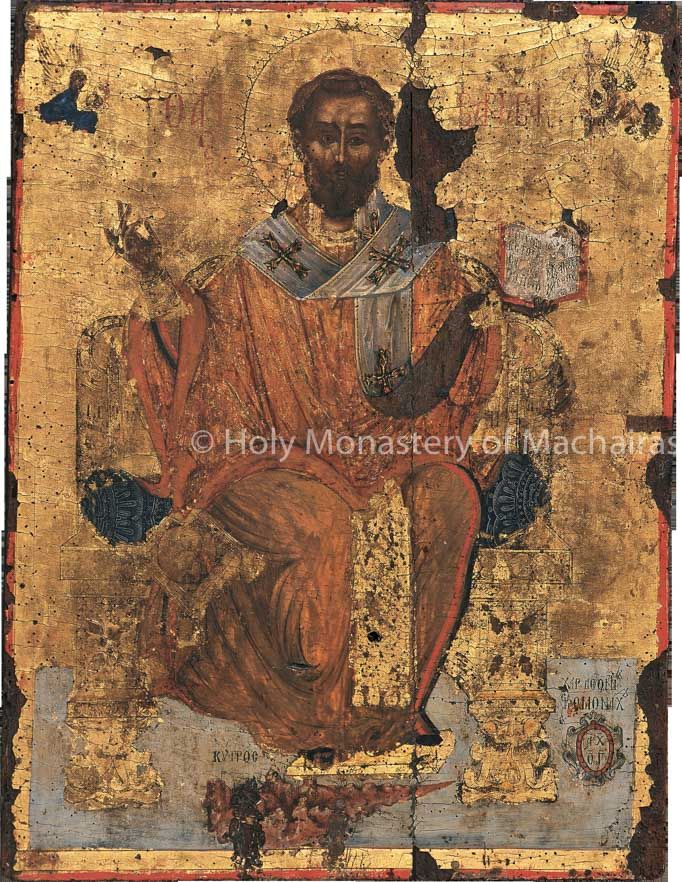
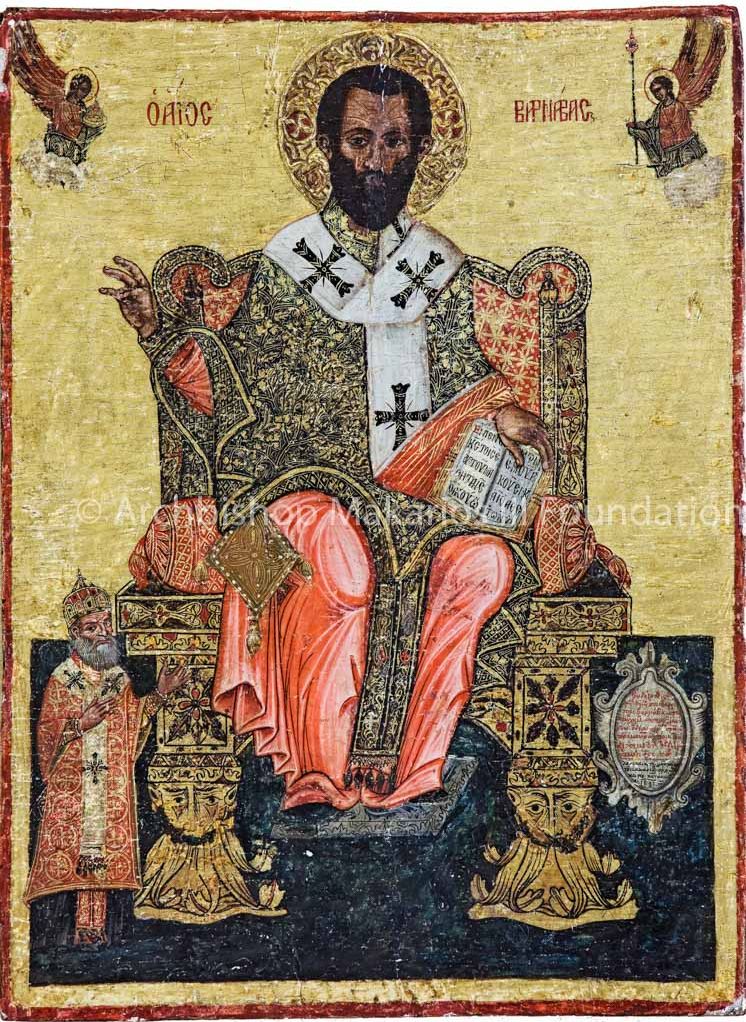
Figure 28
Photo of the 1691 icon of Barnabas, © Byzantine Museum and Art Gallery of the Archbishop Makarios III Foundation. Christos Koukliotis, Director General of the Archbishop Makarios III Foundation, graciously provided this photo and granted permission for me to publish it.
Figure 29
Church of St. John in Nicosia, the National Cathedral of the Orthodox Church of Cyprus. The Ottoman Turks demanded the plain exterior of the building. Inside, however, the structure is covered with frescos; and at the front of the church is a very ornate iconostasis.
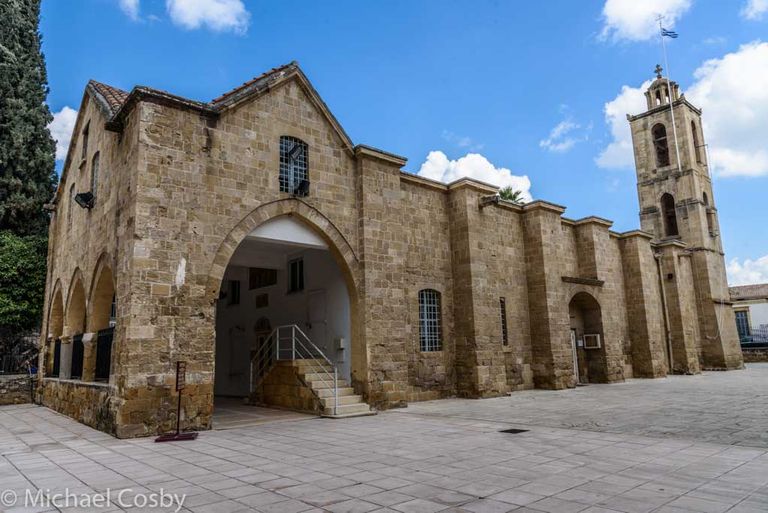
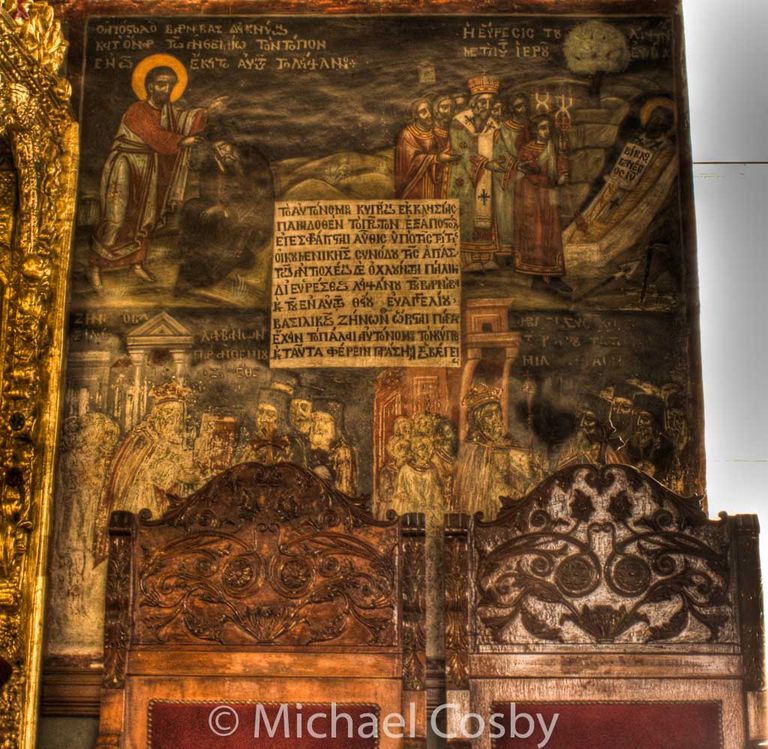
Figure 30
Fresco of the Barnabas–Anthemios legend, located in the National Cathedral of St. John in Nicosia. Daniel Hadjittofi, Director of the Cyprus Fulbright Program, arranged for my wife and me to have an audience with His Beatitude Chrysostomos II, Archbishop of Cyprus. His Beatitude expressed interest in my research on Barnabas and instructed his staff to assist me in my work. I received permission to access their archives, and a wonderfully helpful bishop allowed me to photograph the Barnabas–Anthemios fresco and gave permission for me to publish the picture. During our visit to the Archbishopric, His Beatitude Chrysostomos II invited my wife and me to join him and other dignitaries for what was a very memorable luncheon. We greatly appreciated their hospitality and all they taught us.
Figure 31
Modern painting on the wall of a church in Nicosia, depicting two warrior saints. Many such paintings and frescos —both ancient and modern—decorate the walls of churches in Cyprus.
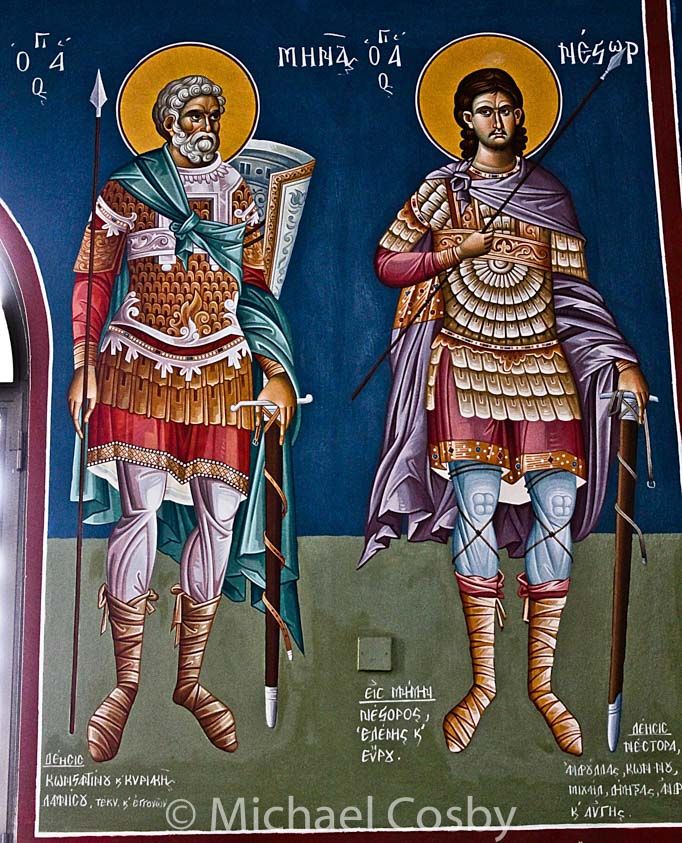
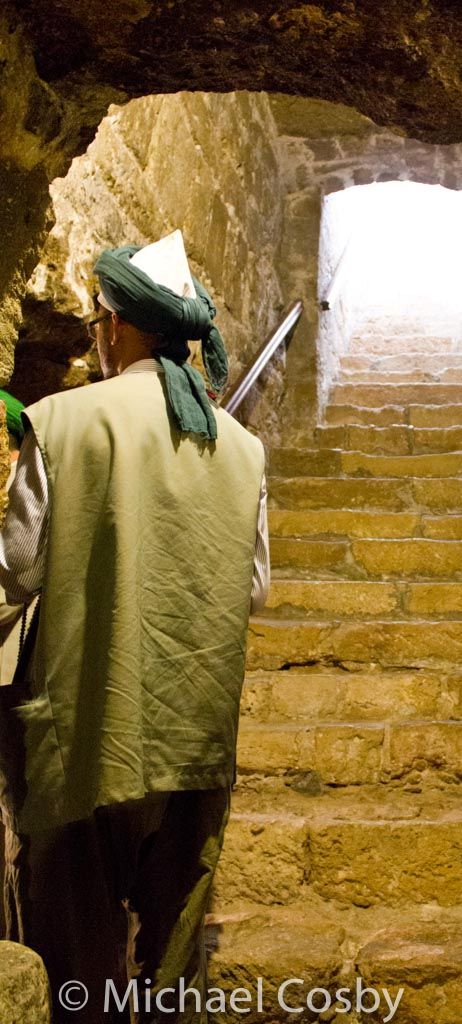
Figure 32
Sufi men respectfully praying at the tomb of Barnabas. Our positive encounter with these men was a delightful and memorable surprise.
Figure 33
Chapel over the traditional tomb of Barnabas, at the Monastery of Apostle Barnabas complex in Turkish occupied northern Cyprus. The chapel was so packed for a special liturgy that no one else could fit inside. The lengthy liturgy was for the elevation of Father Gabriel’s understudy to the full stature of monk. Following the liturgy, the spiritual children of Father Gabriel socialized together. I was surprised to see the newly ordained monk wearing a garment decorated with depictions of human skulls. When I asked about the significance of the skulls, I learned that they symbolized the monk’s death to himself.
